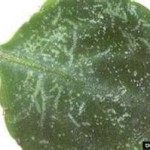Clover mites are part of the arachnid family (along with spiders and ticks). They feed on lawn grasses, clover, and a large variety of plants.
Did you know that:
- A full grown clover mite is smaller than the head of a pin.
- They are reddish to reddish-brown in color.
- They pierce the plant and suck out the sap.
- Feeding damage appears as a silvery streak (referred to as stippling) on the leaf.
- Clover mites do not carry diseases.
- They seek indoor shelter during cold months.
- They are often described as “walking dust specks”.
- They leave a red stain when crushed.
- They are most active in temperatures between 45 and 65 degrees.
- Clover mite damage is commonly mistaken for winter kill.
- Clover mites can reproduce without mating.
- They lay bright red eggs.
- They lay their eggs in sheltered places such as…
- In cracks and crevices of buildings
- Under loose tree bark
- In foundation walls
- Beneath siding
- Around window frames
The feature that distinguishes the clover mite from a spider mite is their unusually large front pair of legs. On the clover mite, this set of legs is as long as their body.
Clover mites aren’t harmful to humans, pets or the home. They invade in large numbers, which makes them a nuisance.
Infestations are most severe where grass, weeds, shrubbery or other plants are allowed to grow adjacent to buildings. Clover mites are also drawn to the sun exposed sides of buildings.
Damage tends to occur within 10 feet of a building, tree or other vertical object. Clover mites climb vertical surfaces to molt and to lay eggs.








